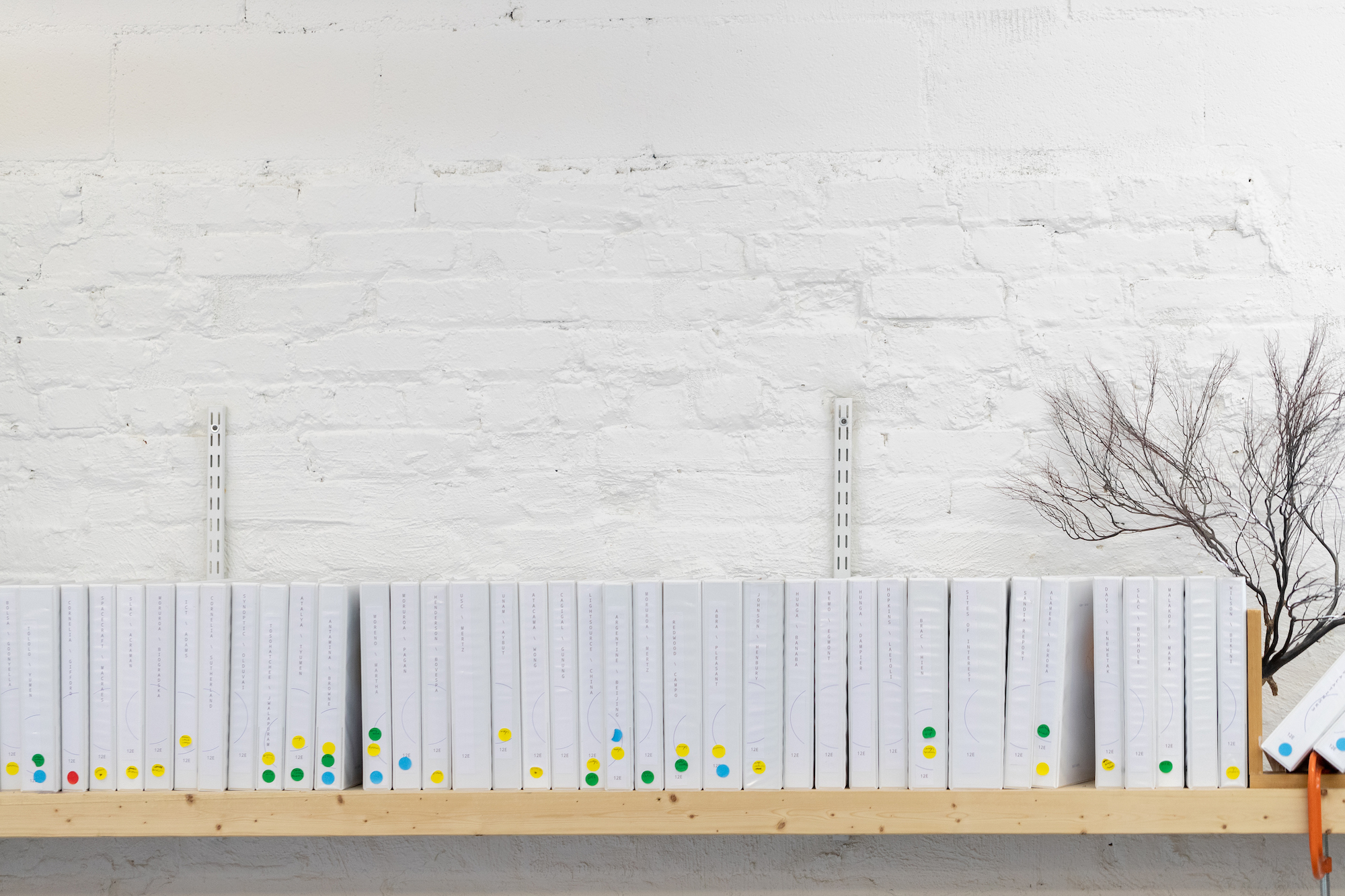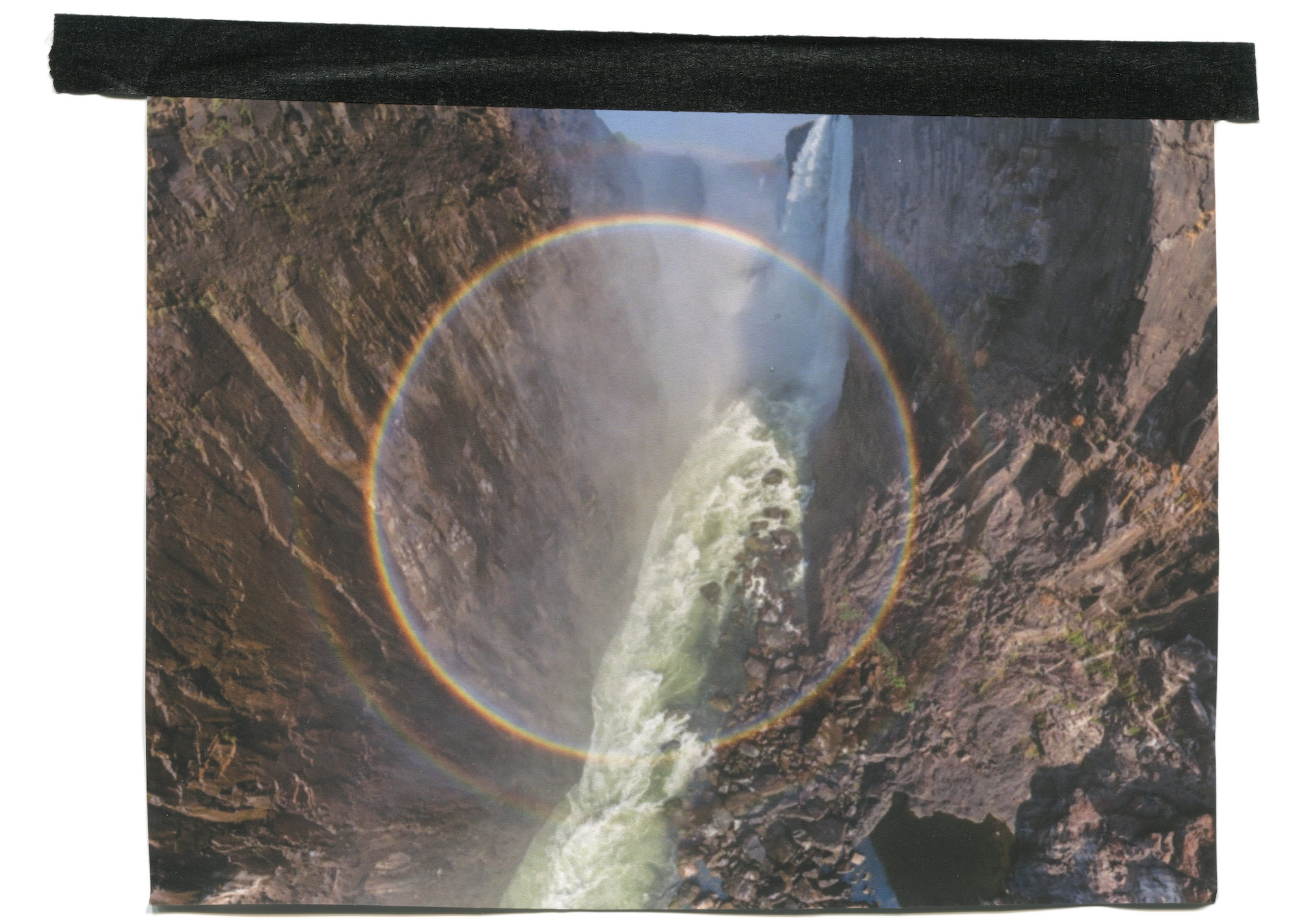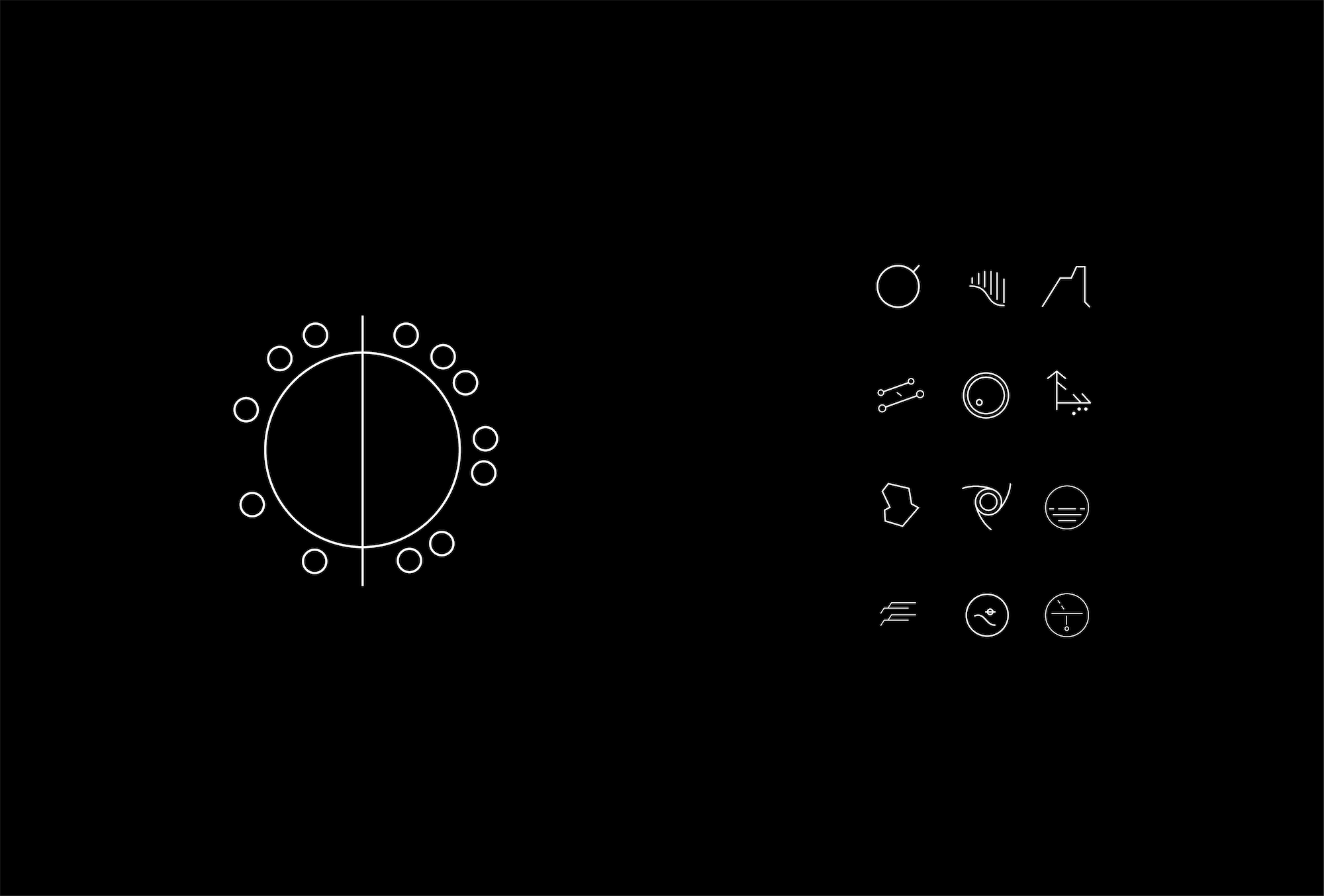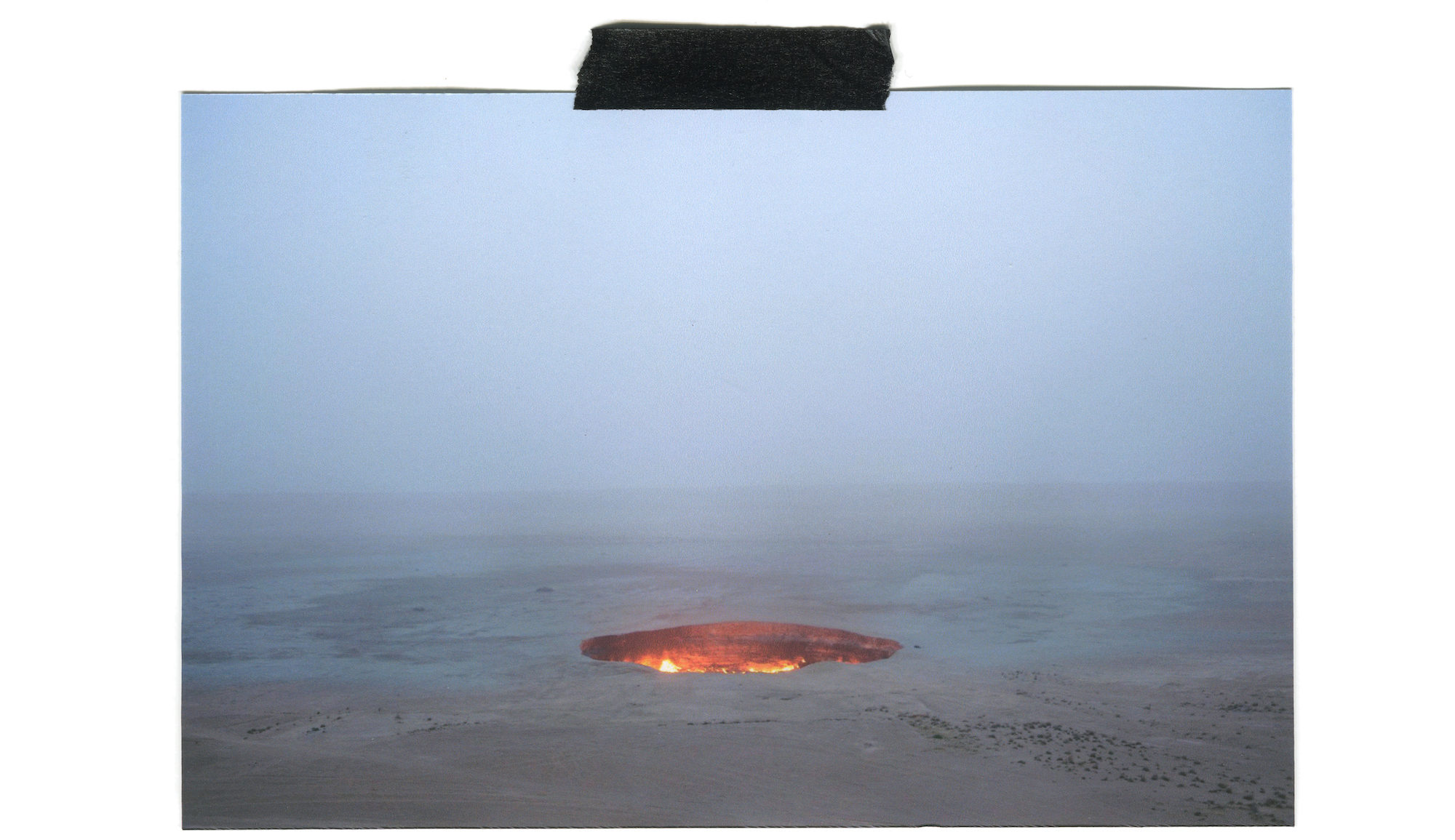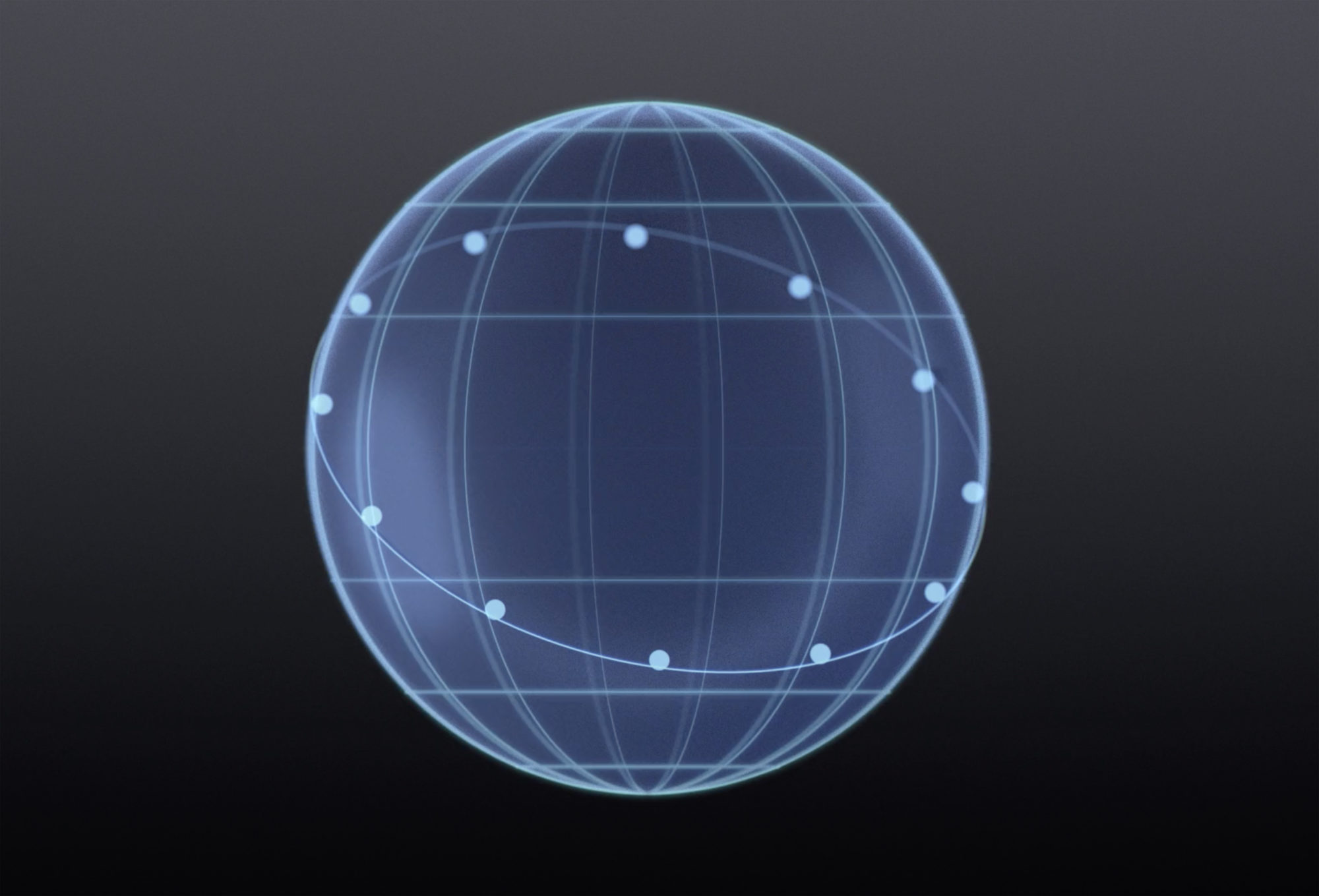Michael Jones McKean: All That Lies Out of Sight
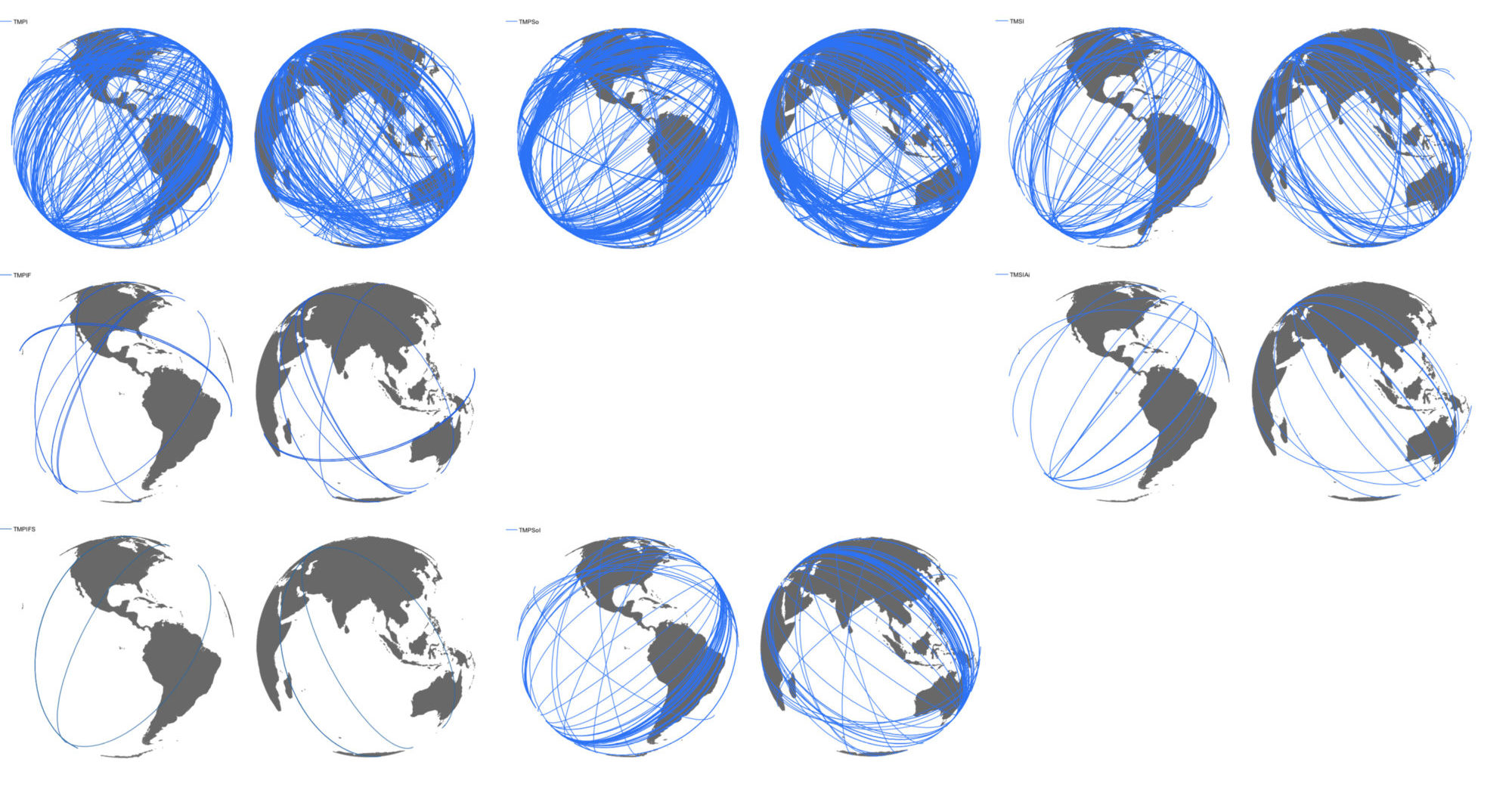
Twelve Earths, process image, 2017 [courtesy of MJM Studio]
Share:
David Kim: Michael, it’s such a privilege to speak today. I thought that we might approach the large topic of art and social justice—or art and social efficacy—by discussing Twelve Earths, one of your current projects. Perhaps you could share something of its genesis; I know that it emerges from concerns that you have been exploring for some time.
Michael Jones McKean: Yes, Twelve Earths is a planetary sculpture [that is] very much still in process. Its essential form is a ring stretching around the circumference of the earth, connecting 12 sites that in aggregate develop a way of thinking about and imagining the planet—its histories, capacities, and ourselves. In a way, the project is set up as a long-form research platform to practice knowing an object—the earth—that will always remain unknowable. Twelve Earths’ DNA emerged out of a project I began in the early 2000s: a conceptual work that set out to locate the longest possible path one could walk to circumnavigate the earth. In both this past work and Twelve Earths, circling becomes a proxy, a verb, to commune with Earth’s gestalt form—a sphere. As I mentioned, we’re deep in process, with sites and site actions being revealed over time until the work is completed in 2029.
DK: It also seems important to highlight that the artwork is centrally interested in exploring a multitude of timescales, among which the unit of a human life is only one.
MJM: Built into the logic of Twelve Earths is an investment in our shared, right-now moment. But as you allude, the project also lives a more speculative, parallel life that flirts with timescales stretching beyond concepts like “you” and “me” altogether. As timescales lengthen and contract, we inevitably enter into stranger, weirder dialogues with things other than human—the mineral, the geologic, the tectonic, the microbial, the subatomic, and more.
Circling back to the form of the work, to communicate deep into time, the sculpture must have some degree of durability to remain coherent as a thing separate from other things in the world. With the right distance, there’s a way to simply understand Twelve Earths as a communication technology, with the communicative possibilities of circle and sphere remaining fairly legible, whether found in geometry, geodesy, or anthropology. When I think of a simple, out-of-time event like gazing toward the horizon—a ritual replayed millions of times a day for millions of years—it’s not so hard to imagine a line bending over the horizon, racing around the planet, returning to where you stand. Along this circumference, improbably, exist 12 significant sites that build a portrait of the planet and its converging timescales: an impact crater, an ancient forest, a nearly submerged island, a massive open pit mine, a nuclear test site, an observatory, fracture zone, and more. Each site distinct, invisible to each other, yet together a constellation.
A portion of Twelve Earth’s physical archive, Summer 2019 [photo: Nick Davis; courtesy of MJM Studio]
DK: Let’s take up the concept of deep time. I wonder about its relationship to politics and activism. For example, many of our ideas and intuitions about justice incline toward the present. We feel it urgent to act to remedy harm, alleviate suffering, and so on. Surely, that will be right in many scenarios. Would you like to suggest that longer time scales are also relevant to how we work on behalf of social justice, however we understand that?
MJM: Yes, that’s right. Taken to extremes, there’s a violence associated with not considering longer durations of time—something like temporal myopia. I don’t at all mean to imply that activists or humanitarians working on present crises are committing latent violence by not being attentive toward longer time horizons—that’s not it. More, it’s our preoccupation with focusing—asymmetrically—our energy toward the near and immediate present, attending to now at the price of more elaborate forecasting and more complex, empathic plans. We don’t really teach time, so of course we’re kind of time illiterate.
DK: Time illiterate. That’s wonderful. Your comments remind me of a Samuel Scheffler work that we’ve discussed, which asks the reader to imagine a near future in which human life and human culture have come to an end. That thought experiment seems pertinent here, and I know that you’ve reflected on this.
MJM: Yes, paraphrasing Scheffler’s core thought experiment just to better recall, [it is] something like: “in the future, knowing that a few weeks after your death in old age, that the world and everything you’ve cared about will end quickly by apocalypse, meteor, something—would knowing of this catastrophe change anything with how you lived your life?” It’s such a powerful question. For many people, I think it underscores how so much of our thinking, even for folks seemingly unoccupied with futurosity, discover that life’s rhythms lean on a shared agreement that a future will be there.
DK: Yes! That’s such a lovely way to put it: rhythms that lean on a shared agreement. I appreciate how Scheffler’s work highlights the great extent to which we find value in activities that are part of long-standing, collective efforts that exceed us. To offer an intuitive example, we might think of scientists pursuing the cure for a rare disease. They recognize that the cure is unlikely to be discovered in their lifetimes, and yet that hardly robs their work of meaning. Or we might think of artists and musicians whose creative practices emerge from lineages of teaching and interpretation. Fundamentally, these activities couldn’t even exist, let alone be valuable—if they weren’t shared with others.
Victoria Falls, 17°55′28″S 25°51′24″E, on the Zambezi River on the border between Zambia and Zimbabwe [photo: Sergey Shandin Stas Sedov; courtesy of MJM Studio]
MJM: This idea of values existing within continuums—traditions—is interesting. Of course there’s a way that artworks have played emergent roles in shaping what might be considered normative, traditional even. In this sense, artworks behave a bit like messengers, contouring thoughts, imagination, and over time, in ways largely undetectable, [they] augment the values and dreams for larger collections of people. All this might sound naive, optimistic maybe, but it describes a process of cultural transmission in a pure sense, which of course has social and ethical and political dimensions.
DK: And then, of course, in certain moments, messengers leap forward and arrive to deliver ideas and messages that are vivid to the present ….
MJM: Yes! To me, it’s one of the most powerful sensations—when you’re with a work that somehow, really against all logic, manages to do what you just described. The feeling is so complex: a mixture of strange inevitability—as if the idea was always there—and awe. Obvious in the most profound, undiminishable ways.
DK: I wanted to linger around the idea that values often arise from within traditions of practice. We understand politics as a deeply important activity, but we don’t usually practice politics as our sole end. Instead, we practice politics—we keep practicing politics—in order to secure conditions of freedom and equality in which individuals and communities can choose the forms of life that they deem valuable. For this paradigm even to be coherent, it’s necessary that the world be alive with a rich diversity of goods, values, practices, institutions, attitudes, et cetera. The messengers that you describe, contouring and augmenting, slipping into dreams, are [essential elements] of that richness.
MJM: Yes. While you were speaking I was imagining this diverse ecosystem of highly specialized labor practices: gardeners, teachers, astrophysicists, biologists, mechanics, all collectively—utopically—adding richness, value, and depth to one another. It has me thinking that in spite of this division of labor, even in its highest order where we’ve delegated professionals to focus on the political and ordained folks to draft our laws, it doesn’t absolve us from acting and being political, or finding ways for our work to be more just, ethical, more sensitized, better.
Twelve Earths, primary glyph and site glyphs [courtesy of MJM Studio]
DK: That reminds me: while in law school, shortly after the last presidential election in the United States, I attended a lunch with a small group of students and a guest of honor, an alumna who has had a brilliant career as a journalist and writer. Have I told you this story? I worry about repeating myself and revealing that I have only, really, a handful of ideas.
MJM: Ha! Not at all, this is a totally new one.
DK: Good. Well, many of the students in attendance had themselves worked as writers, journalists, editors, or translators before law school, and some number of them expected to restart that work after graduation. And, as you might imagine, many were concerned and upset by the election results. And so, one student, with a forceful earnestness, asked our guest, “If you were in our position now, what would you do? Perhaps one must become a public interest lawyer now.” She said: “I deeply admire what you do and what you’re training to do. Yes, these skills are critical, and one response is absolutely to become an activist lawyer.” A brief pause. And then she said something that I have carried with me: “You know, another response is to do what you would have done—but better.”
It’s one of the most beautiful things that I’ve ever heard said. And complicated, too. The idea that by a commitment to being a better editor or translator, by a commitment to one’s reflective ideals of excellence, one could vindicate a vision of the world in contradiction of the worst parts of a certain politics.
MJM: It is beautiful. The desire to find ways to do better work, to strive toward being excellent to each other, especially in times of crisis and conflict, feels important. It helps underwrite how we might very simply model an ethos of care. One that might be foundational for everyday sorts of living together. I say this, and I also hope to become much better at it, to work harder at this.
Inversely I wonder if this idea resonates so strongly—a desire to work toward being better at something—not in spite of our failed, heartbreaking political moment, but because of it; if this impulse could be rooted in a therapeutic desire to control something, even as everything around us seems to be collapsing. Like, I can focus on this small thing and the larger world goes away. Self-care through escapism.
DK: Yes, that’s a good challenge. Part of the rigor of “doing it better,” I suppose, arises from the impossibility of reaching general rules about when attention to craft lapses into preciousness, or when pursuit of a vision of excellence becomes indefensibly self-indulgent. And hence a duty of deep reflection, I suppose. But how to keep up this interrogation and yet live with conviction? I don’t know. I struggle with this.
MJM: I think I do, too. In some ways, if I let it, I can see the studio as just an elaborate system that grants permission to obsess over many tiny details. This is probably true for many artists, at any moment fighting back personal crises, trying to ward off feelings of self-indulgence while trying to lead productive, creative, and also somehow useful lives ….
Darvaza Gas Crater, Door to Hell, 40°15′09″N 58°26′23″E, Ahal Province, Turkmenistan [photo: Carolyn Drake for Magnum Photos; courtesy of MJM Studio]
DK: Ruefully, I suggest that we shift focus for a moment. We should also discuss Twelve Earths in more concrete terms. From the beginning, you have emphasized that the project aspires to a certain ethos of engagement, consultation, and collaboration at its specific sites. Would you elaborate on this?
MJM: I suppose it’s also important to remember the project is large: 12 locations existing simultaneously all around the world. Large, by itself, is totally uninteresting, but here it’s a good reminder that massive distances are not only noetic but [also] real. Size highlights so much of what’s complex about working on Twelve Earths. So, in the process of designing ethical organizational structures that remain sensitized to place, one must also be responsive to the crisscrossing vectors that shape a location’s reality, compounding histories, politics, languages, customs, mixed in parallel with vast expanses of prehuman history. To finish the project, this process of deep learning and engagement will happen 12 very different times. Each site proposes a set of possibilities to work closely with people, [to] build deeper, thoughtful connections to place.
DK: I thought to end by reading a poem together: “Furthermore,” by Christina Davis. I’ve often returned to this poem in the course of working on Twelve Earths, guided mostly by intuition. I’m sure that I’ll learn something in exploring this with you.
[MJM and DK read the poem]
I’m always so moved by this. Where to begin? Michael, you often narrate how an individual might experience a given site. That person stands at a site, turns to orient their body on the great circle, and looks over the horizon. Through that movement, the person also faces, by implication, the other 11 sites. Where once the work seemed big, it feels much smaller: navigable within the geography of the body. And then, I imagine, the work expands again, moving outward at extraordinary speed, as one becomes aware once more of the unknowability of the line and the horizon and all that lies out of sight.
MJM: That is a beautiful thought, thank you. I really love this poem. So few words, yet the work manages to conjure something huge in the mind. The push and pull of the body, its senses, the world-external. Bachelard has this concept I really love: “intimate immensity.” How something small, or the briefest encounter—two objects making beautiful contact—can unleash a fullness of feeling, a sensation of immensity in the mind.
Twelve Earths Process, still from animation, 2018 [courtesy of Milton Melvin Croissant III and MJM Studio]
DK: Perhaps I am drawn to Davis’ poem, in part, because it redescribes the immensity of the horizon in ways that, I think, resound in Twelve Earths. The horizon is not only a locus of hope and possibility. It is also a locus of difficulty and uncertainty.
It was something to let him go.
It was a having to believe, furthermore,
in the voyage
of the other, a Ulysses
without an Ithaca …
The second line is astonishing. Here is the titular word, “furthermore,” isolated by commas, ending a line that runs well past the [other lines]. We find ourselves alone. And we are exposed there, I think, to an appalling exertion: an impossible attempt to comprehend the absence of a beloved. Perhaps the word “furthermore” propels us beyond some horizon into knowledge and coherence. Or perhaps not. The whole poem is lifting and tilting.
MJM: Yes, all of it. I’m especially drawn [by] how she reaches the end. Mysterious, small nova …
And for comfort, a dwelling
before each
steps into that weather
of which all
strangers speak.
DK: In truth, the last stanza is mysterious to me. What is the dwelling? Where is it? At least we know something about the self that has returned. It has been partially undone, evacuated, I think, at the horizon to which “furthermore” propels it. Here: “to have for a body / the going away of the body, to have for eyes / the going away of the eyes.” That horizon, whatever we understand it to be, is strange. It is suffused with love and hope, but also with grief and loss. It is essentially beyond ourselves. Perhaps, when we return, we are chastened somehow, or lent a new modesty, one born of vulnerability, which we might take with us into our political lives.
MJM: Many things come to mind. This last thought, modesty born of vulnerability, is beautiful. Feels right to linger with it.
David Kim is curator-at-large with Fathomers, a contemporary art foundation in Los Angeles. In that role, he collaborates with the artist Michael Jones McKean. Kim is also a Research Fellow at the Royal College of Art in London. Before joining the RCA, he worked as a management consultant at such firms as McKinsey & Company and Incandescent. He holds degrees from Columbia University, Harvard University, and Yale Law School.
Michael Jones McKean is an artist based in France and Richmond, VA, where he’s taught in the Sculpture + Extended Media Department at Virginia Commonwealth University since 2006. His work explores the nature of objects, folklore, technology, and mysticism, employing objects and materials as diverse as ancient meteorites, of-the-moment technologies, raw clay, prismatic rainbows, and the earth itself. McKean is a recipient of numerous awards, including a Guggenheim Fellowship, as well as fellowships at The Core Program at The Museum of Fine Arts in Houston, The MacDowell Colony, the International Studio & Curatorial Program, Fine Arts Work Center in Provincetown, and The Sharpe-Walentas Studio Program.
